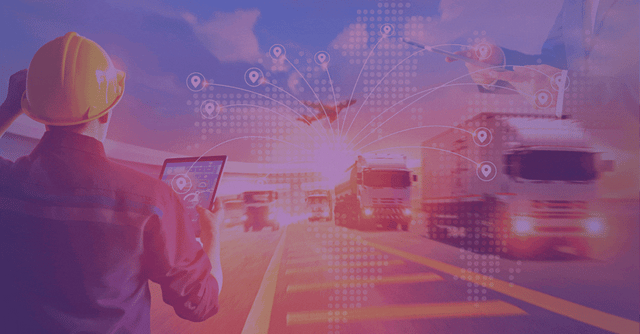Blog | AI In Finance
Building the Automation Business Case in Transportation and Logistics

The pandemic created problems and opportunities for shippers, freight forwarders, brokers, and carriers.
It brought to light several issues with legacy systems. However, this presented an excellent opportunity to introduce automation into their technology stack.
By upgrading their legacy commerce systems, they automate manual processes, gain more insight into their operations, and thrive—not merely survive—during these difficult times.In addition to AI and advanced technology, Transportation and Logistics (T&L) companies benefit from leveraging advanced analytics. This data identifies opportunities for different negotiation strategies, controlling pricing, and adjusting volume accordingly to demand commitments by utilizing the visibility of data with a framework to make educated decisions.
Historically, T&L companies have been vulnerable because their increasingly sophisticated customer base has access to more products and services than ever and is adept at evaluating prices. Distributed sales forces often rely on outdated processes and do not have accurate insight into customer preferences and growth opportunities.
As T&L professionals know, moving materials and goods through the supply chain is a manually intensive business heavily dependent on human capital, which became an even more precious commodity once the pandemic started. As the virus spread, most individuals (88%) reevaluated their priorities, and countless numbers quit their jobs. By November 2021, 4.5 million people left their employers.
T&L has enormous potential to deliver commercial success. COVID-19 and the Great Resignation created the perfect time to examine whether suppliers of visibility solutions provide shippers with the tools and data they need.
The Advantages of Adopting Digital Solutions
Technology allows companies to identify and address bottlenecks or pain points that take considerable time. With complete supply chain visibility, errors are identified and resolved in real-time rather than receiving a report.
Making the switch to modern finance technology enables T&L companies to:
- Leverage advanced analytics and identify opportunities for different negotiation strategies
- Gain more visibility into and control over pricing
- Adjust volumes accordingly to supply and demand commitments and constraints
- Support distributed sales forces
- Predict payments and collections more effectively
- Reduce human error and erroneous behavior
- Empower employees by offloading routine tasks to spend more time on high-value work
- Improve customer service, boost client satisfaction, and retain more clients by creating instantaneous, easy, and frictionless interactions
- Identify and remediate financial process bottlenecks in real-time
- Reduce cost per shipment expenses
Software solutions provide a long-term way to reduce cost per shipment expenses and increase customer response rates. Synchronous automation can analyze and react in real-time—an activity rate humans can’t compete with.
For example, technology automates functions such as customer response, load creation in a transportation management system (TMS) or enterprise resource planning (ERP) system, and shipment quotation capture.
It provides visibility into data with a framework to make educated decisions.
Forward-thinking companies realize that lower costs and increased productivity is achieved by integrating advanced technology into their supply chain, especially in accounting.
Automation in Action
One major transportation and logistics company based in Austin saw incredible results after implementing automation.
Before introducing Auditoria SmartBots, 3,500 invoices were manually generated and processed daily. Team growth was projected to double the AR headcount, and the additional salaries would eat up the valuable budget for the team.
After introducing automation, the company is on track to save more than two million dollars in three years, thanks to Auditoria. They have been able to reduce the AR headcount by 20 percent. Further, the investment made in technology will be paid back in only two quarters after implementation—a clear indication of the value of finance automation.
Introducing Auditoria SmartBots
Purpose-built for finance teams in transportation and logistics, Auditoria SmartBots integrate with systems of record such as an Enterprise Resource Planning (ERP) application, a Transportation Management System (TMS), and other collaboration applications and act as a system of engagement.
SmartBots execute the SmartCollections skills to dynamically prioritize worklists, streamline dunning notices based on load numbers, classify customer accounts with the right specialists, and handle helpdesk inquiries to generate data that provides critical insights into cash performance.
Intelligent Classification
Manage customer payments with intelligent, granular classification rules for personalized engagement for each account or payer type. Dynamically recalibrate and reclassify accounts as their payment behavior changes to ensure more accurate payments and reporting.
Courtesy Notices and Dunning
SmartBots send courtesy notices and dunning based on communications cadences set to specific account criteria and specified intervals to maximize collections efforts and streamline correspondence, saving countless hours for the AR team.
Prioritized Worklist
Streamline collections teams’ efforts with a daily worklist of strategic recommendations and prioritized actions. Curated by SmartBots, the worklist is dynamically updated to maximize efforts and outreach so that age and amount are no longer the only levers to determine a course of action.
Customer Bi-Directional Communications
SmartBots monitor email inboxes for inquiries and calls to action, engaging and communicating conversationally with all key stakeholders. SmartBots set alerts for the collections team to address escalated situations on a case-by-case basis. SmartBots handle requests based on the type of loads or freight details, recovering hundreds of hours previously spent sifting through emails and responding to routine questions.
Collector CRM
SmartBots collect and populate rich account CRM with detailed notes, reminders, and audit logs to provide a comprehensive 360-degree view of collections interactions across the portfolio of accounts. Each interaction— whether SmartBot-driven or led by an AR analyst or customer relations specialist—is captured, providing detailed audit and granular account analytics to the collections team for greater visibility and transparency.
For modern Transportation and Logistics back-office teams, Auditoria’s SmartBots provide a system of engagement, utilizing the AR inbox and systems of record to automate AR functions while reducing working capital dependence to improve overall cash performance.
